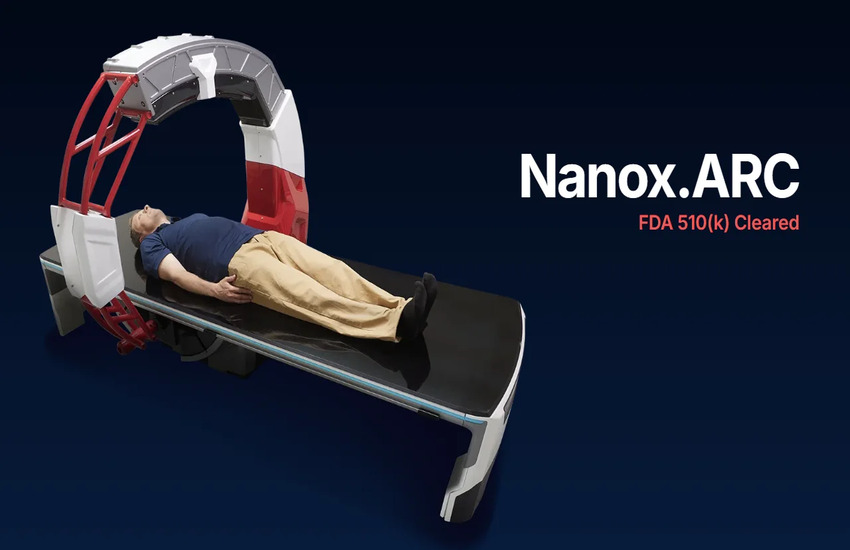Nano-X Imaging, or Nanox (NASDAQ:NNOX), is back in the headlines with a move that could mark a strategic turning point in its ambition to crack the U.S. healthcare market. On November 19, the company announced an agreement to acquire VasoHealthcare IT (VHC IT) from Vaso Corporation for up to $800,000—$200,000 up front and the remaining $600,000 tied to revenue retention targets over the next two years. For a company like Nanox, still in the early innings of commercialization, this acquisition isn’t just a tuck-in deal—it’s a deliberate step to accelerate the adoption of its FDA-cleared AI-driven imaging solutions in a market notorious for slow technology transitions. VHC IT specializes in nationwide healthcare IT integration, data migration, training, and go-live support—making it a potentially valuable partner in bridging the “last mile” between cutting-edge radiology software and real-world hospital deployments. So, what synergies could Nanox unlock through this acquisition? Let’s dig in.
Accelerating AI Deployment with “Feet on the Ground” Integration
For a company like Nanox, building software is just half the battle. Getting hospitals and imaging centers to actually implement that software—and use it effectively—is the bigger, messier challenge. That’s where VasoHealthcare IT comes in. With a footprint in IT integration across healthcare systems nationwide, VHC IT brings more than just technical support; it brings institutional knowledge, trusted relationships, and operational muscle.
Healthcare deployments, especially of AI-driven technologies, involve sensitive workflows, multi-stakeholder approvals, and regulatory guardrails. Nanox.AI, despite its FDA clearance, can’t simply be “plugged in.” Hospitals must integrate it into existing Picture Archiving and Communication Systems (PACS), Radiology Information Systems (RIS), and Electronic Medical Records (EMRs). VHC IT has deep experience in precisely this type of integration, which could significantly reduce deployment timelines and friction with hospital IT departments.
Moreover, Nanox has been building a platform approach to diagnostics—leveraging machine learning to identify early signs of disease. But without a scalable path to implementation, the tech risks collecting dust. VHC IT helps mitigate this by acting as an in-house integrator, potentially giving Nanox tighter control over project timelines, support quality, and client satisfaction. While it remains to be seen how smoothly the post-merger integration proceeds, the structural logic here is sound.
Revenue-Linked Deal Structure Lowers Risk for Nanox
Let’s face it—$800,000 isn’t pocket change for a company with trailing LTM EV/Revenue multiples north of 12x and no positive EBITDA in sight. But Nanox structured this acquisition with hedged downside: only $200,000 is paid upfront, while the remaining $600,000 is contingent on VHC IT hitting revenue retention milestones over two years. This earnout framework serves two purposes.
First, it signals a level of prudence from Nanox management. In a year when the company has traded at lofty LTM Price/Sales ratios—16.3x as of November—investors have become more valuation-sensitive. Structuring the deal around actual business performance offers built-in protection against overpaying for underperforming assets.
Second, the earnout incentivizes business continuity. VHC IT’s value is deeply tied to its client relationships and ongoing service contracts. Keeping those relationships intact post-acquisition is critical. By tying most of the purchase price to retained revenue, Nanox is effectively buying time and alignment—encouraging VHC IT’s leadership and staff to stick around and maintain client satisfaction.
From a capital allocation perspective, this is a relatively low-risk, high-utility transaction. The structure offers downside protection, potential upside leverage, and keeps Nanox’s cash burn in check—important considerations for a company still operating in the red.
Vertical Integration Could Improve Margins Over Time
VHC IT isn’t just an integrator—it’s a services layer that sits atop hospital deployments, offering training, workflow optimization, and ongoing technical support. By bringing this capability in-house, Nanox can offer a full-stack solution to its healthcare customers, potentially unlocking pricing power and improving gross margins.
Historically, AI companies in healthcare have struggled with razor-thin margins due to heavy reliance on third-party service providers. Every outsourced integration or training module is a cost center that eats into the software’s unit economics. But if Nanox internalizes these services through VHC IT, it could control costs better, productize the onboarding process, and even build recurring revenue streams through support contracts.
Moreover, there's long-term strategic optionality. If Nanox can standardize its deployment process with the help of VHC IT’s playbooks, it could turn integration into a SaaS-like offering. That’s not to say recurring revenue is guaranteed—healthcare procurement cycles are notoriously slow—but vertically integrating services puts Nanox in a position to control more of the customer journey, which often translates to better margins and customer retention.
Of course, this assumes successful integration and retention of key personnel—a big “if” in M&A. But the structure and strategic intent are aligned with margin enhancement over time.
Enhancing Strategic Credibility in U.S. Healthcare
Perhaps the least tangible—but most strategic—benefit of acquiring VHC IT is the credibility boost it gives Nanox in the eyes of U.S. healthcare decision-makers. For many providers, working with startups can feel risky. Hospitals are complex, liability-sensitive institutions that require not just innovative tools but also assurance that those tools can be deployed safely, reliably, and in compliance with healthcare regulations.
VHC IT already operates in this world. It provides go-live support, compliance checks, and workflow alignment in large hospital systems. By acquiring that capability, Nanox is signaling to the market: “We’re not just a clever AI lab—we can actually deliver, integrate, and support at scale.”
This could pay dividends beyond direct integration. Strategic partnerships with other vendors—think EMR providers, imaging hardware firms, or hospital groups—often hinge on a company’s implementation capacity. With VHC IT in the fold, Nanox’s value proposition becomes more turnkey, which could open doors to deeper commercial partnerships and larger enterprise contracts.
To be clear, perception isn’t everything—but in healthcare, it counts for a lot. With regulatory oversight, malpractice risks, and multi-year budgets on the line, trust and delivery capability often outweigh raw innovation. This acquisition, modest in size but big in optics, might help Nanox close that credibility gap.
Final Thoughts

Source: Yahoo Finance
Nanox’s stock price has crashed over the past year from $10 levels to hardly $3 today. However, there is a reason for this. Its LTM EV/Revenue sits at 12.6x with negative LTM EV/EBITDA of (3.26x), and its LTM P/S at 16.3x. Those are rich multiples for a company still burning cash, making disciplined capital allocation even more critical. The planned acquisition of VasoHealthcare IT reads like a smart, strategic move: low-cost, revenue-contingent, and operationally synergistic. While this deal appears to fit that mold, execution remains the swing factor. In short, this acquisition is not a silver bullet—but it is a calculated step in the right direction. Whether it moves the needle meaningfully? Time will tell.


